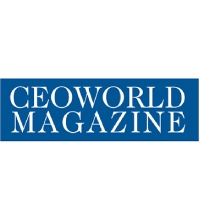Businesses that operate on inventory might run into situations where customer purchase orders are yet to be fulfilled while invoices remain unpaid. This leads to a cash flow problem that puts businesses in a bind. In such scenarios, purchase order financing can be an intuitive funding option that can foot inventory purchases. This form of funding allows businesses to receive and fulfill orders greater than their existing inventory or the number of goods their immediate cash reserves can procure. Wholesalers, retailers, manufacturers, and even exporters rely on this funding method to foot their business expenses. In this article, we discuss the key aspects of purchase order financing and how it can help your business needs.
What is Purchase Order Financing?
As a short-term business loan, purchase order financing is a unique approach that allows businesses to take on orders they would otherwise be unable to fulfill. Purchase order funding involves the financier paying a portion of the total amount required to buy inventory so you can deliver the goods to your customers. In essence, PO financing is an advance that can help you take on orders even when your business is strapped for funds in the short term. Upon approval, the financier will pay your supplier directly.
After receiving the order, the customer then pays directly to the financing firm. The financier then deducts their charges from the customer’s payment and then deposits the remaining balance in your account. This method of funding is useful for businesses that run through inventory rapidly but have to wait for prolonged periods for customers to pay their invoices. Businesses that rely on customer payments to finance their inventory procurements find purchase order financing to be among the common methods to obtain short-term capital support while managing their finances.
How Does Purchase Order Financing Work?
Purchase order financing involves four parties:
- Company: The company denotes the business applying for PO financing from a purchase order financier.
- Purchase order financier: The firm that finances your order and pays the supplier is the purchase order financier.
- Supplier: Your supplier who replenishes your inventory by either selling you the material or manufacturing it. The supplier will receive payment directly from the purchase order financing firm.
- Customer: The customer is your client that wants to purchase your products or services. Upon receiving the delivery, the invoice you send your customer is paid directly to the purchase order financing company.
The Purchase Order Financing Process
- Receiving an order from the customer is the first step in determining whether you require purchase order financing. After evaluating your existing inventory and cash reserves, you can evaluate whether you need financial assistance to fulfill the order.
- After calculating the costs, you can apply to a purchase order financier to help you foot the bill and fulfill your customer’s order.
- The purchase order company’s underwriters will evaluate your business application along with a cost estimate from your supplier. PO firms might approve up to 100% of the procurement price. If the firm only approves 75% of the order value for funding, you will need to foot the remaining 25% of the purchase price.
- The approved amount is then directly deposited into your supplier’s account after they substantiate that the order has been shipped or delivered.
- Once the customer receives the goods from the supplier, you can send them an invoice and direct them to pay the purchase order company directly.
- After receiving full payment from your customer, the purchase order company will deduct its fees and deposit the remaining amount to your account.
When Should I Apply for Purchase Order Funding?
Purchase order funding is a great way to fund customer orders when your business cannot afford to procure the necessary inventory. It is an effective short-term solution for immediate capital requirements and is suitable for any business that relies on an inventory-based business model. You might want to consider purchase order financing for the following reasons:
Managing Seasonal Fluctuations
Businesses such as wholesalers, retailers, and distributors often witness seasonal highs and lows in demand. This creates complex cash flow problems that lead to serious setbacks in year-on-year projections. Also, businesses are left with a rigid cash flow issue when demand picks up – making purchase order financing a viable option.
Rapid Inventory Cycling
Several businesses rely on selling their entire inventory multiple times in a single accounting cycle to create tangible profit. This is often observed in businesses that make low margins on their sales. PO funding can offset immediate cash flow concerns and help such businesses revitalize their cash flow by accepting new orders.
Rapid Business Growth
Certain businesses tend to grow much faster than the rate of customer invoice fulfillment. In such instances, sacrificing growth is not an option. Purchase order financing allows businesses to remain committed to their plans by mitigating immediate cash flow concerns.
Unexpected Invoice Fulfillment Delays
There might be periods in the financial year when customers request extensions on their payments. These delays can end up throwing a wrench in future plans. Purchase order financing is an ideal solution in such situations where businesses can continue accepting new orders while waiting on payments.
Rigid Cash Flow
Some businesses run operations that cannot withstand delays in payments or additional expenses in their accounting periods. Businesses that wish to retain their cash flow patterns and still take new orders can benefit by utilizing PO funding.
Business Expansion
If a business is looking to fund its expansion by accepting more orders, purchase order financing can help. It allows business owners to advance funds and capitalize on their ability to accept a greater number of orders, further promoting business growth.
How to Qualify for PO Financing
The qualification criteria for purchase order financing firms are fairly simple. Most business owners with a good track record can secure funding for their orders. Here are some common features that enhance your prospects of securing financial assistance from a PO firm:
- Selling to customers with good credit scores improves your chances of getting approval from the purchase order financier.
- Healthy profit margins on your sales indicate a lucrative business. If your business has margins of at least 15-20%, your business is more likely to qualify for funding.
- Having suppliers with a clear track record of manufacturing or selling high-quality goods adds more value to your proposition and increases the likelihood of approval.
- If your business runs on a business-to-business or a business-to-government model, funding partners might be more inclined to consider your application.
- Businesses selling completed products instead of product parts or raw materials have a greater chance of receiving approvals.
It is important to note that PO firms often do not evaluate aspects like business credit scores. Instead, your customer’s creditworthiness and the supplier’s reputation carry more weight in your application.
The Pros and Cons of Purchase Order Funding
As with all other modes of business funding, purchase order financing has both advantages and disadvantages. Both are listed below:
Pros
- Purchase order funding has straightforward qualification criteria compared to other forms of financing. Business loans and other financing solutions are rigid and emphasize your business’ credit ratings. For entrepreneurs that are new to the industry or businesses that have been through difficulties, this can be a hurdle to success. Purchase order financing relies on the nature of your business and your customers’ credentials. This makes it easier to qualify and gain funding.
- Purchase order financing is not paid back in installments. This clears up financial woes for cash-strapped businesses. The funding received by your firm is paid back to the PO company when your customer pays their invoice.
- Quick and easy funding is another attractive feature of purchase order funding for small businesses. You can be sure of fulfilling your orders without worrying about funds and their availability.
Cons
- Purchase order financing is limited in its scope and can only cover supplier bills. This can be restrictive for businesses that seek funding assistance for purposes other than footing supplier costs.
- High-profit expectations from businesses are another factor that might make this form of business financing seem unviable to certain entrepreneurs.
- The amount your business is approved for is determined by your customers’ credit records. This removes control from the funding applicants. Moreover, the process of paying and fulfilling orders is also fairly removed from your operations.
Alternatives of Purchase Order Funding
For businesses that are not comfortable with the terms applied by purchase order funding, other viable alternatives exist. Some of these are:
- Line of Credit: Business credit lines are flexible and allow businesses to use the funds for any purpose without restricting it to supply expenses.
- Invoice Factoring: Also called accounts receivable factoring, this method involves businesses selling their invoices to a factoring firm which then provides cash advances. The funding received in this form of business credit also remains flexible and is rather straightforward to procure.
- Invoice Financing: Unlike invoice factoring, invoice financing does not require you to sell your invoices to a factoring firm. Instead, it allows your business to borrow against your existing accounts receivable. It is a flexible method that still allows you to retain control over your invoices.
- Term Loans: Despite rigid qualification criteria and prolonged processing times, business term loans can be a simple funding solution for businesses in need of immediate funds.
- SBA Loans: SBA loans are offered especially to small businesses to help them grow in their niches. These loans have capped interest rates and are guaranteed by the government.
- Merchant Cash Advance: This is a unique funding protocol that allows businesses to borrow against future credit card sales. Evaluation processes are quick, and approvals are frequent for businesses with a good track record.
Sum Up
For businesses that have a decent financial history but require additional funding to fulfill incoming orders, purchase order financing is an ideal solution. PO funding remains a great way to support business aspirations and allows entrepreneurs the liberty to accept orders beyond their cash and inventory reserves.



























